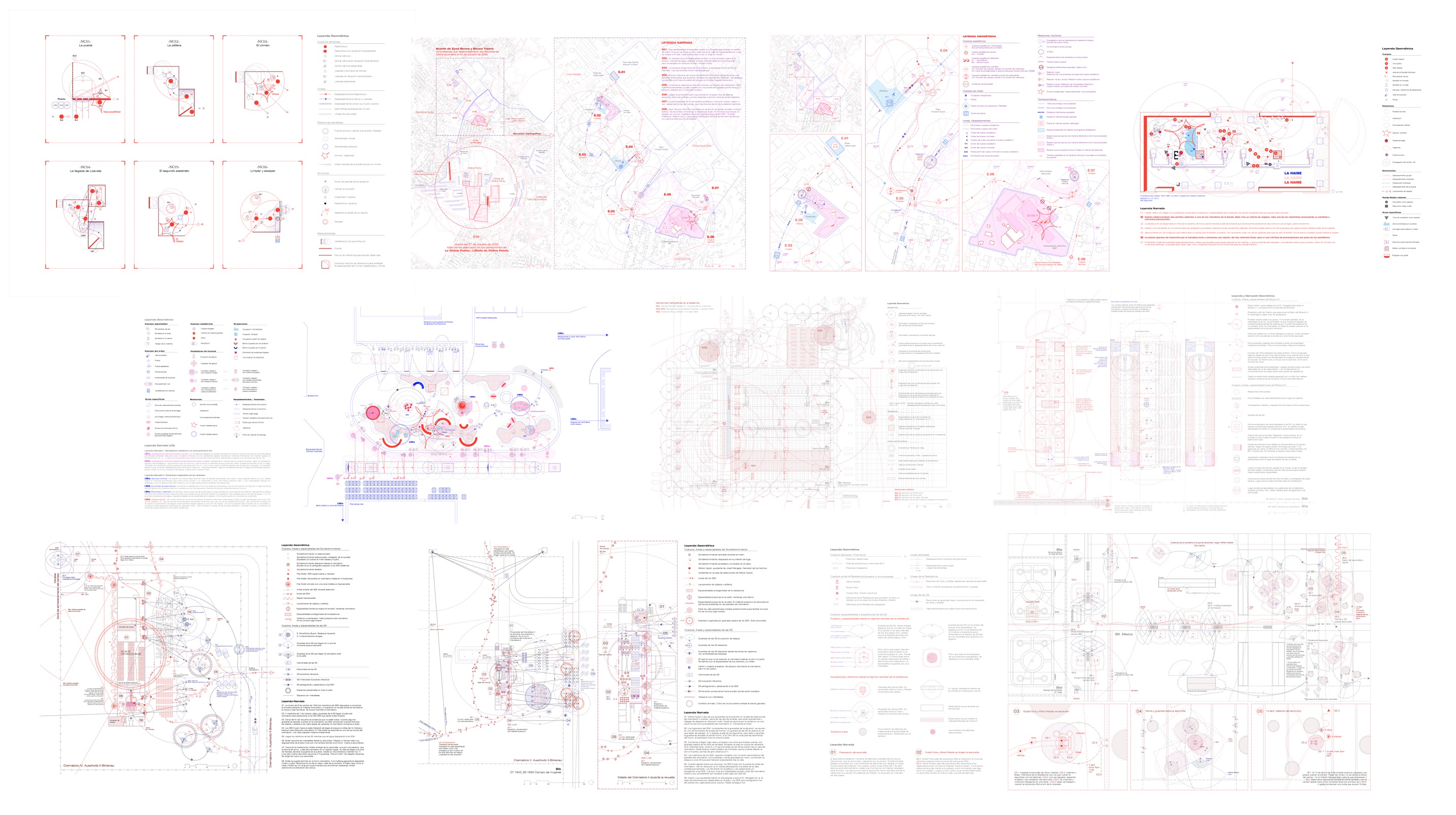
Title: Narrative Cartographies: Architectures from the sensitive regime of resistance.
Author: Víctor Cano Ciborro
Date: 2021
Abstract
In the early morning of April 10th 1944, Rudolf Vbra and Alfred Wetzler escaped from Auschwitz II-Birkenau concentration and extermination camp. They had remained hidden under a pile of wooden slats for more than three days, during that time they became completely invisible and unnoticeable, having smeared their bodies and the hiding place with chewing tobacco that they had dried in gasoline. This simple but very sensitive gesture made their escape possible because it confused the sense of smell of more than two hundred dogs, who were trained by the Nazi guards and went in search of the men once their disappearance had been confirmed.

This successful escape put into practice a form of architecture that does not constitute a built object but rather arises by operating spatially using the smell. That is to say; an invisible and immaterial sensation becomes the protagonist and constitutive axis of what has been called the architecture of resistance. This form of architecture must be understood as the reaction of hypersensitive bodies when faced with forces of oppressive and alienating contexts, in which there is a sensitivity towards small perceptions –usually underestimated by the architectural discipline itself–. This thesis will focus on the afore-described concept and will deem it absolutely necessary to follow a theoretical-practical method led by a drawing capable of complementing and detailing the contents of such particular types of architecture.

Now then, how can one draw a type of architecture that is not characterized by its forms, but by the development of the forces and sensations of the bodies that build it? The answer is using narrative cartographies. This operative concept reveals the main objective of the research: to use cartography and cartographying in order to make visible, to claim and to promote not only the sensitive condition of architecture but also the types of architecture that are born from its sensitive condition. An example of this is that escape, which was only possible by confusing the meticulous sense of smell of a group of dogs trained to find any fugitive from the camp.
Based on this, two lines flow and overlap throughout the research on the concept of cartography. The first forms the conceptual apparatus that integrates and qualifies this cartographic notion from the interaction of three fields: Deleuzian and Foucaultian philosophy; radical geography with its maps at the resistance’s service; and architectural trends that, beyond thinking and drawing contours or figures, are interested in bodies, sensations and contextual forces. The second line is devoted to the production of narrative cartographies in extremely complex territories in order to show the relevance, possibilities and limitations of the cartographic method, which is evidenced through two major case studies. On the one hand, the precise spatial knowledge exhibited in the cartographies of Bhadra Plaza and its surroundings –the most problematic district of Ahmedabad in India– allows us to address the area’s conflict based on processes, programs and projects concerned with dignifying the life of those who live beyond the norm and what is regulated. On the other hand, the meticulous descriptions narrated by Auschwitz II-Birkenau’s survivors make it possible to map the resistances perpetrated in the concentration camp from what a body feels, can and builds. These extreme situations show us a barrack that was a school, a revolt in the crematoria, and, finally, the escape of Rudolf Vbra and Alfred Wetzler. All these narrative cartographies will help us to delve into the sensitive condition that constitutes the very complex and conflictive architectures of resistance.